

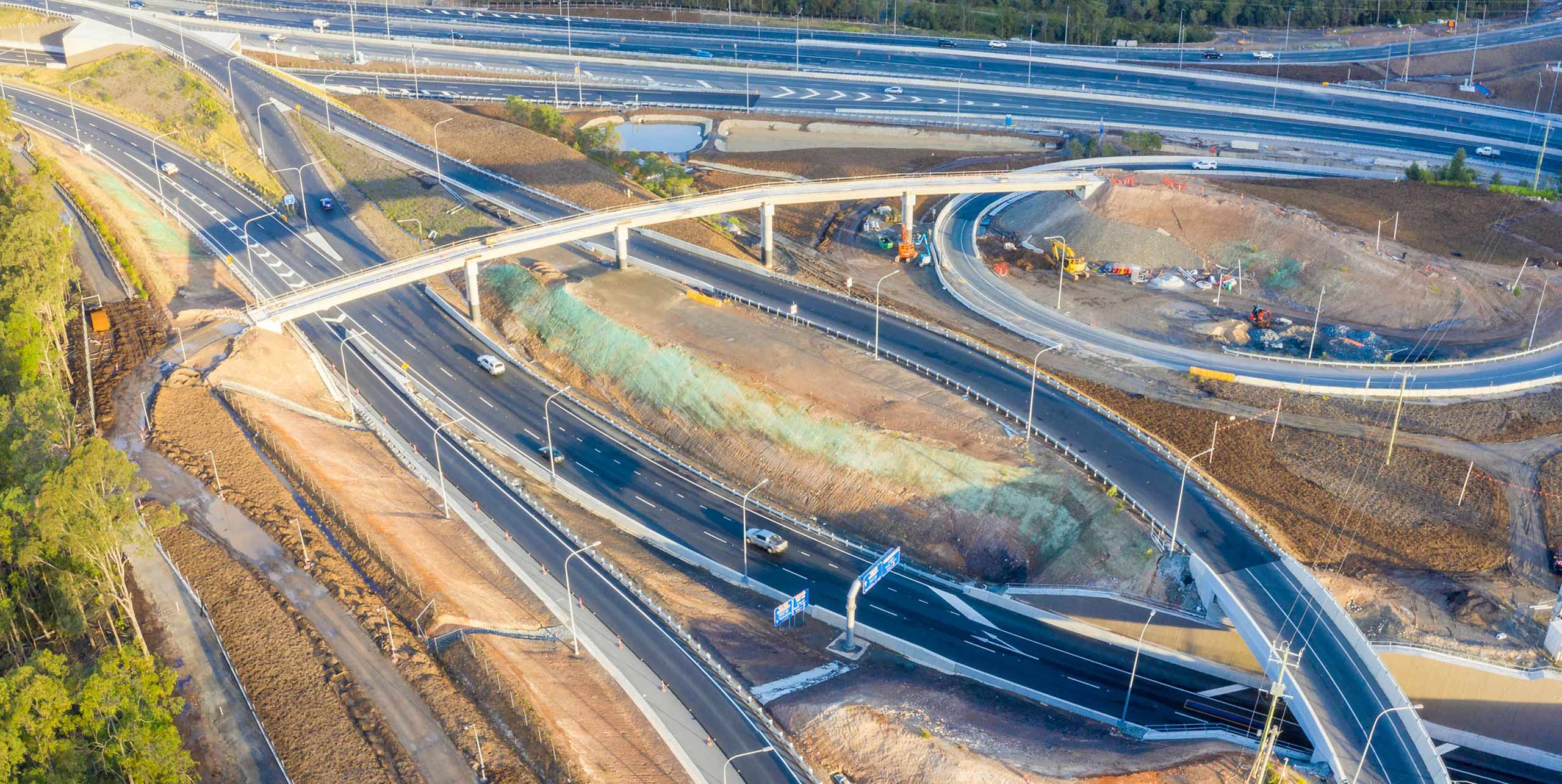
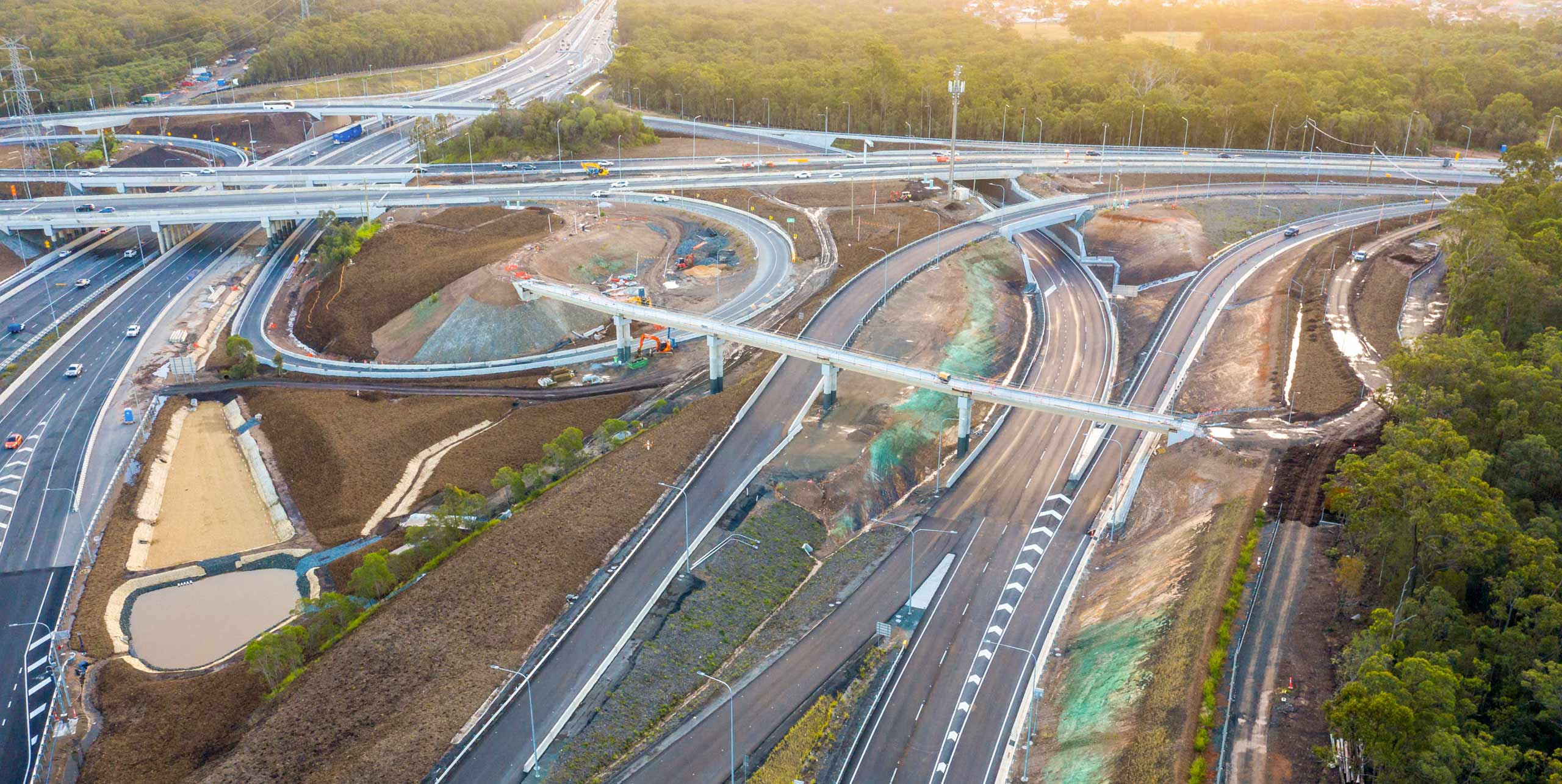
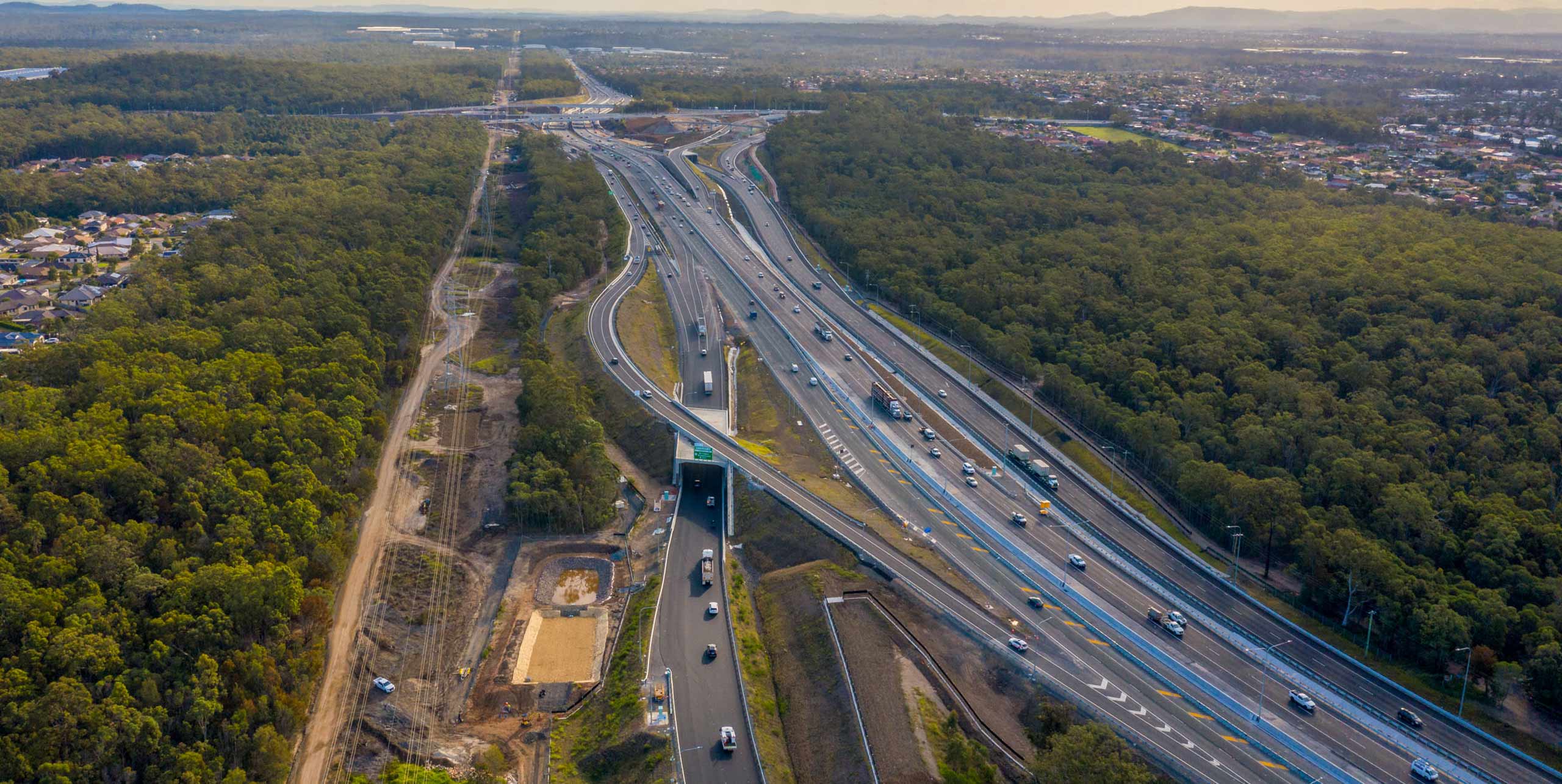
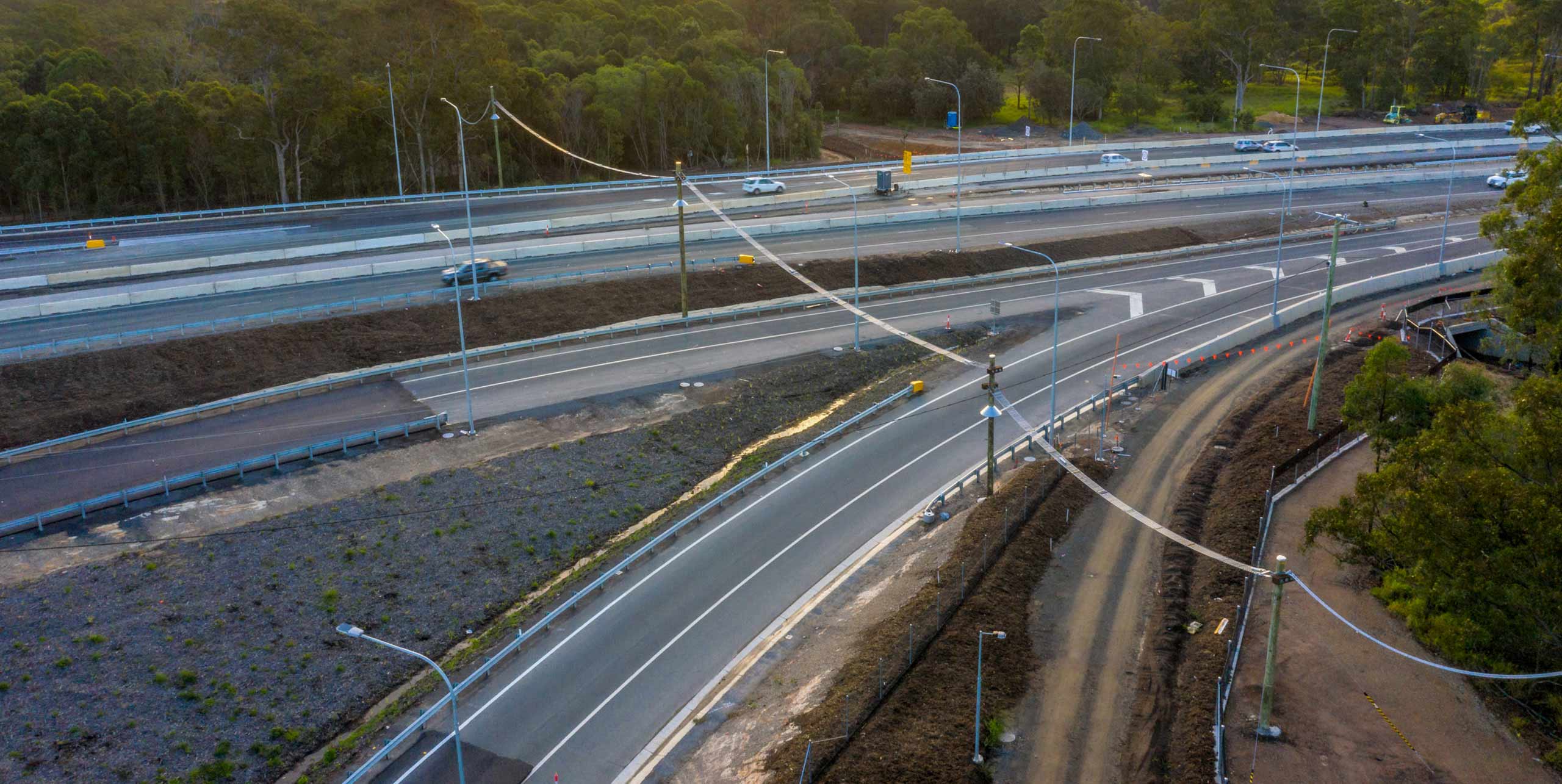
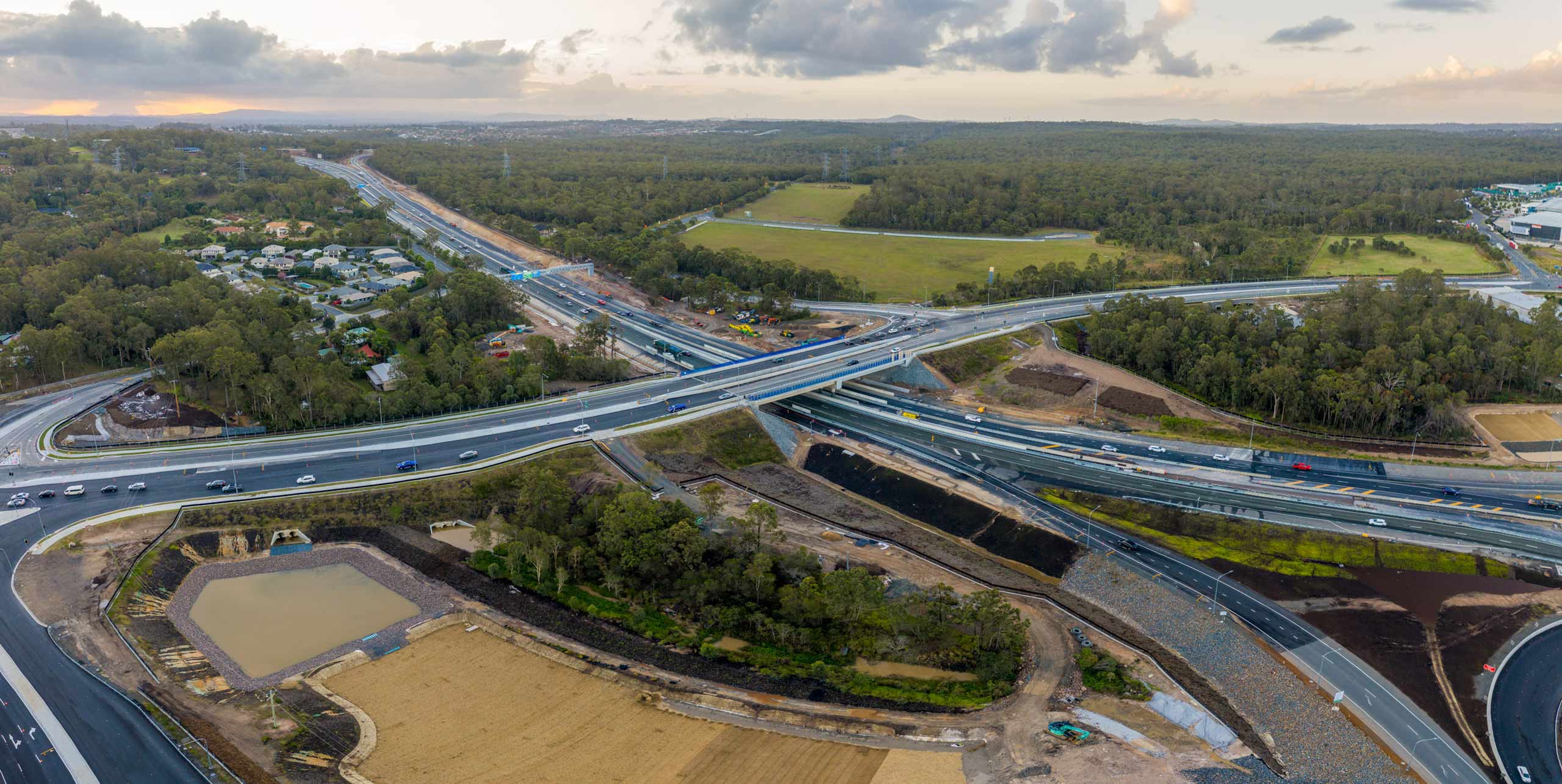
One year on from its completion, the upgrade has vastly improved safety and connectivity for communities in Southeast Queensland. Perhaps most significantly, the accident rate has been reduced by 59% through minimising the merging and weaving of traffic. The improved capacity of the road network also means significantly shorter journey times.
With more than 170,000 motorists using the Logan and Gateway extensions every day, the design has delivered a long-lasting solution that protects future growth, earning strong sustainability ratings from the Infrastructure Sustainability Council of Australia (ISCA).
The challenge
The project involved upgrading four kilometres of the Logan Motorway and 10 kilometres of the Gateway Extension motorway, improving key congestion hot spots, constructing new south-facing ramps at one junction, constructing 18 bridges and laying approximately 500,000 tons of asphalt all under live motorway conditions.
The challenge was to provide an effective design that would:
- guarantee safe and reliable travel for commuters during construction in a live traffic corridor carrying up to 90,000 vehicles per day
- improve the “pain points” for commuters – reducing congestion, delay times and driver frustration
- manage interfacing stakeholders with competing priorities
- safely work adjacent to and over environmentally sensitive areas and waterways
- manage reconstruction of brownfield pavements with unknown subgrade conditions.
Collaboration in action
A fully integrated project team worked collaboratively with project owner Transurban, wider stakeholders and the community to maximise return on investment and deliver value for their asset. Together with its joint venture partner GHD, SMEC was responsible for all design elements, working collaboratively with CPB Contractors. The interface between the design and construction teams was among the most critical elements of the project’s success.
The team pledged to “keep the road users moving” through the design and construction phases of the project by challenging the design solution to deliver incremental improvements on traffic flow during construction. As a high-volume transport corridor in South East Queensland, this was a major undertaking to ensure continued use. This was achieved through careful planning and integration between design, construction and traffic teams and including the early delivery of new service roads and interchange ramps.
Face to face design presentations and comment close-out sessions for each package helped significantly to streamline the design program and mitigate delays. The team also introduced a cloud based collaborative review process, which allowed multiple stakeholders across multiple locations to share and review design packages.
Innovative design leads to sustainable outcomes
“The LEP is located within one of Queensland Government’s designated ecological and conservation corridor, or green belt, linking the Karawatha Forest to the Flinders Range,” explains Jo Davis, Environment Manager. “The opportunity to connect habitat through the design was compelling. We had the chance to put sustainability in action through our design, and SMEC and our partners actively engaged the community to achieve that.”
The design remediated the historic fragmentation of the Flinders-Karawatha corridor through improved habitat connectivity and bespoke design solutions for species of conservation significance, such as koalas and gliders.
“Although we had to manage multiple design exceptions and changes within a fast-tracked program, we were determined to challenge the design solution,” says Jo. “As a result, we not only delivered a road asset with reduced disruption and travel time but also earned an “Excellent” sustainability rating for the design and a “Leading” sustainability rating for the as-built phase of the project.”
This was achieved through adopting sustainable technologies such as energy-saving LED lights, EME2 asphalt (which reduces the volume of materials required for road surfaces), identification of approximately 200 items of Aboriginal cultural significance by hand-scraping at 24 sites, recycling soft-plastics—a first for the infrastructure construction industry—and key environmental outcomes to enhance environmental connectivity
The LEP is the first project in Queensland to achieve a Leading infrastructure sustainability rating from ISCA.
The results
Strong collaboration across the design process, from commencement to implementation, enabled all parties to make ‘best for project decisions’ that led to excellent outcomes for the natural environment, local community and Queensland economy.
“We all want to spend less time sitting in traffic and more time at home or doing things we enjoy with our families and friends. The improvements to access, travel times and safety delivered by the LEP have been fantastic for residents and businesses. This project is a great example of intelligent investment in Infrastructure.” says Trevor Sullivan, SMEC Director Infrastructure.
In addition to shorter journey times, improved safety and better road access, the LEP also generated roughly A$1 billion of economic benefits to the region and has enhanced business and freight hubs in the west and north regions of Brisbane.
Related
insights
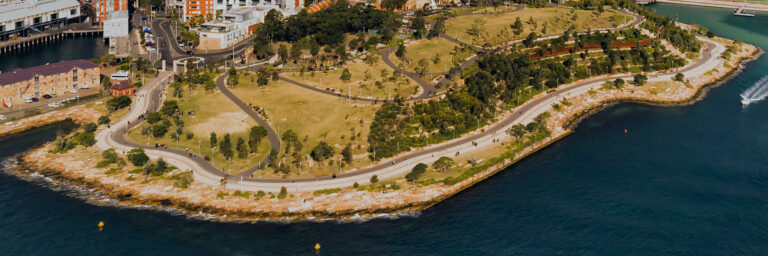 Australia’s land is ready for a revolution Part 1
Australia’s land is ready for a revolution Part 1
As American President John F. Kennedy once said, “Change is the law of life. And those who look only to the past or present are certain to miss the future.” This is especially pertinent in Australia when looking at how we use and redevelop our land.
 Australia’s land is ready for a revolution Part 2
Australia’s land is ready for a revolution Part 2
In Australia’s land is ready for a revolution – Part 1, I discussed the opportunities for industrial transformation in Australian regional centres and how these changes could take shape. In Part 2, I look more closely at key considerations for the redevelopment of land.






